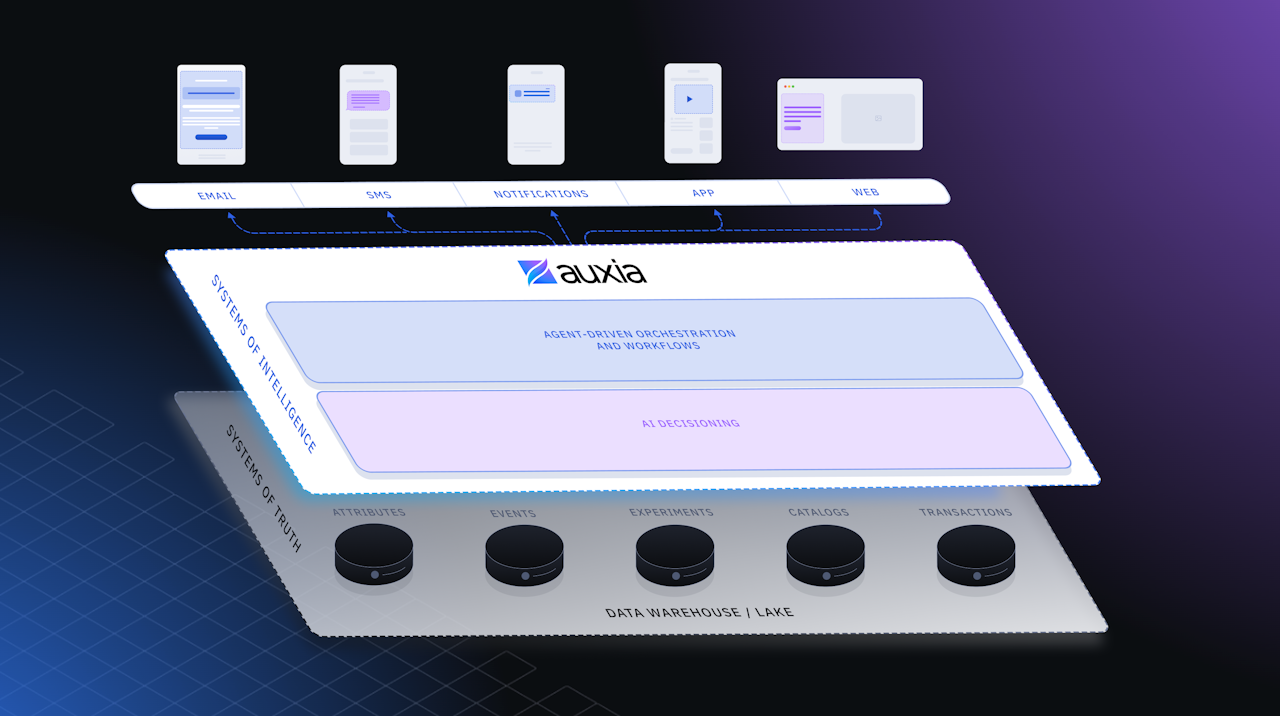The Great Marketing Stack Consolidation: Why Point Solutions Are Dead
![]() Sandeep MenonAug 4, 20257 min
Sandeep MenonAug 4, 20257 min

The Fragmentation Crisis
After speaking to dozens of marketing teams over the past year, the first clear theme that emerges from conversations with CMOs, CTOs, and CIOs is that they are tired of managing a plethora of point solutions.
The numbers tell the story: even mid-sized companies typically operate multiple different solutions in their marketing stack. Each tool was implemented to solve a specific pain point—email automation here, customer data platform there, A/B testing in another corner. But what marketing leaders are discovering is that all of these tools have their own silos, with absolutely no cognition, cohesion, or unified customer point of view.
The hidden costs extend far beyond software licensing. Companies invest millions in integration specialists, data engineers, and agency staff just to make these disparate systems work together. It’s not unheard of to spend more on the people managing a marketing stack than on the technology itself.
Most frustrating of all is the personalization paradox: despite having more marketing technology than ever before, most companies struggle to deliver truly personalized experiences. Rules-based systems and batch processing create experiences that feel generic and disconnected from real customer behavior.
The Convergence: Technical Enablers
Two fundamental technological shifts have converged to make marketing stack consolidation not only possible but inevitable.
The first is the maturation of cloud-native data warehouses. Since Snowflake’s emergence in 2015, enterprises have invested billions of dollars in getting all their data into centralized, accessible repositories. For the first time, companies have a true single source of truth for customer information: structured transaction data, unstructured behavioral signals, and everything in between, all sitting in one place.
The second enabler is the transformer architecture revolution that powers modern large language models. These advances allow AI systems to understand and process both structured and unstructured data at unprecedented scale and speed. What previously required extensive data science teams and weeks of analysis can now happen in real-time, enabling immediate decision-making based on the most current customer behavior.
Combined with improved API accessibility, these technologies create the foundation for a fundamentally different approach to marketing technology; one where intelligence, rather than data movement, becomes the primary value driver.
The New Architecture: Intelligence Layer
The future marketing stack looks dramatically different from today’s fragmented landscape. Instead of separate tools for data collection, storage, analysis, and activation, a new intelligence layer sits between your data warehouse and customer touchpoints.
This intelligence layer represents a complete paradigm shift. Rather than moving data between systems and applying rigid rules, AI agents make dynamic decisions in real-time based on complete customer context. A decision agent determines the optimal action for each individual customer. An analyst agent continuously evaluates performance and suggests improvements. Content agents create and optimize messaging and creative elements so teams can focus on more strategic priorities.
The result is continuous optimization rather than periodic campaign adjustments. Instead of running A/B tests for weeks to determine what works, the system learns and adapts continuously, testing hundreds of variations and automatically promoting the most effective approaches.
This architecture eliminates the need for most traditional point solutions. Why maintain separate tools for audience segmentation, experimentation, personalization, and analytics when a single intelligence layer can handle all these functions more effectively?
Real-World Results
Companies implementing unified AI-driven platforms are already seeing dramatic results. Take two recent examples from our work at Auxia: a leading international marketplace with billions in gross merchandise value achieved an 84% increase in customer lifetime value by replacing their fragmented, segment-based campaigns with Auxia’s user-level AI decisioning engine. Meanwhile, a global financial institution with over $500 billion in assets boosted onboarding completion rates by 50% while conducting 22 times more experiments than their previous system allowed.
The breakthrough in both cases came from moving beyond rules-based segmentation to AI systems that consider complete customer context—purchase history, real-time behavior and demographic signals—to make optimal decisions in milliseconds rather than the weeks required for traditional A/B testing cycles.
The Choice Ahead
What makes this consolidation wave different from previous enterprise software cycles is the capabilities it unlocks. After years of marketing technology breaking apart into specialized point solutions, AI is now driving them back together—but with fundamentally new possibilities.
Take real-time personalization as an example. Most systems today claim to be real-time, but they’re really not.
Here’s what true real-time looks like: when someone looks for a product in the fashion category on a digital marketplace, AI algorithms can immediately analyze what they just bought and determine the optimal next category to surface—maybe sports memorabilia—along with the specific subcategories and incentives most likely to drive a cross-sell. This decision happens in milliseconds, based on that individual’s complete purchase history, browsing behavior, and demographic signals.
That kind of in-session decision-making, based on complete customer context, simply wasn’t feasible with fragmented tools. Traditional systems might recommend similar products—more jeans if you bought jeans—but they can’t make the intelligent leap to complementary categories that actually increase lifetime value.
The companies getting breakthrough results today understand this goes beyond buying new technology. They’re reimagining how marketing teams operate when AI agents can handle the analysis that used to require teams of consultants.
Marketing leaders can either drive this consolidation proactively or be forced to react as competitive pressures mount. The enterprises that embrace this transformation early will set customer expectations for personalized experiences that fragmented systems simply can’t match.